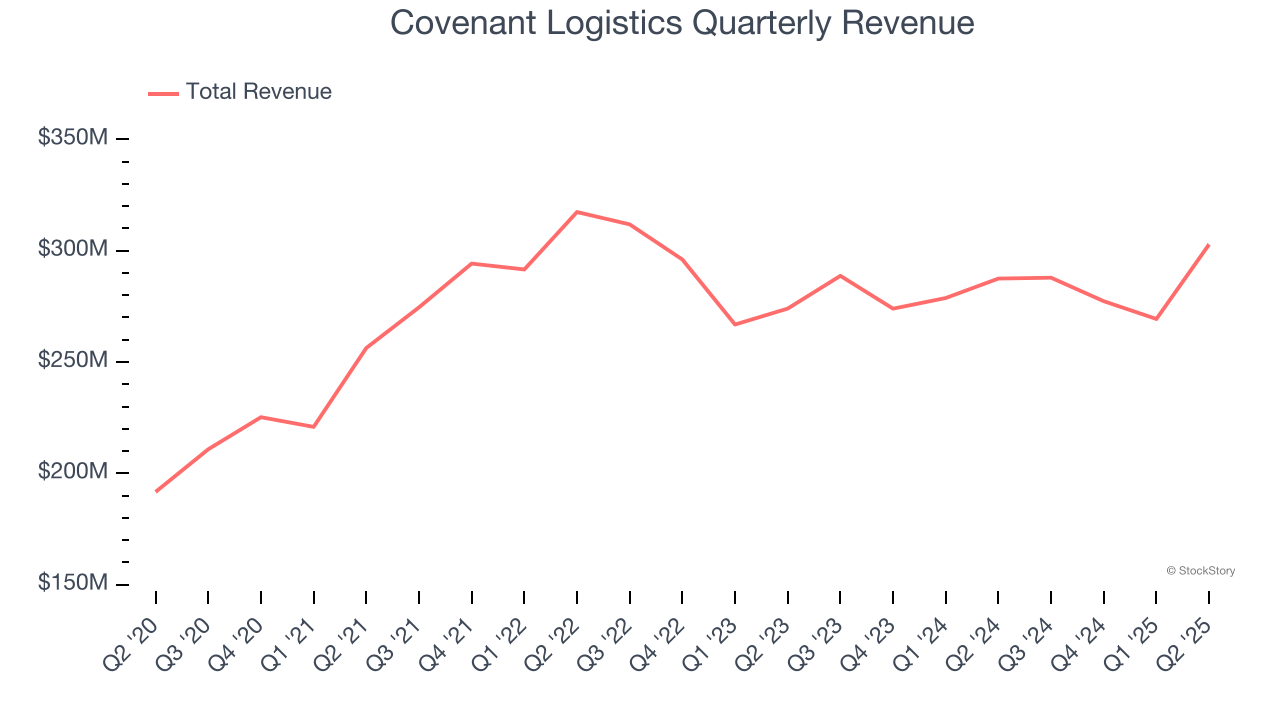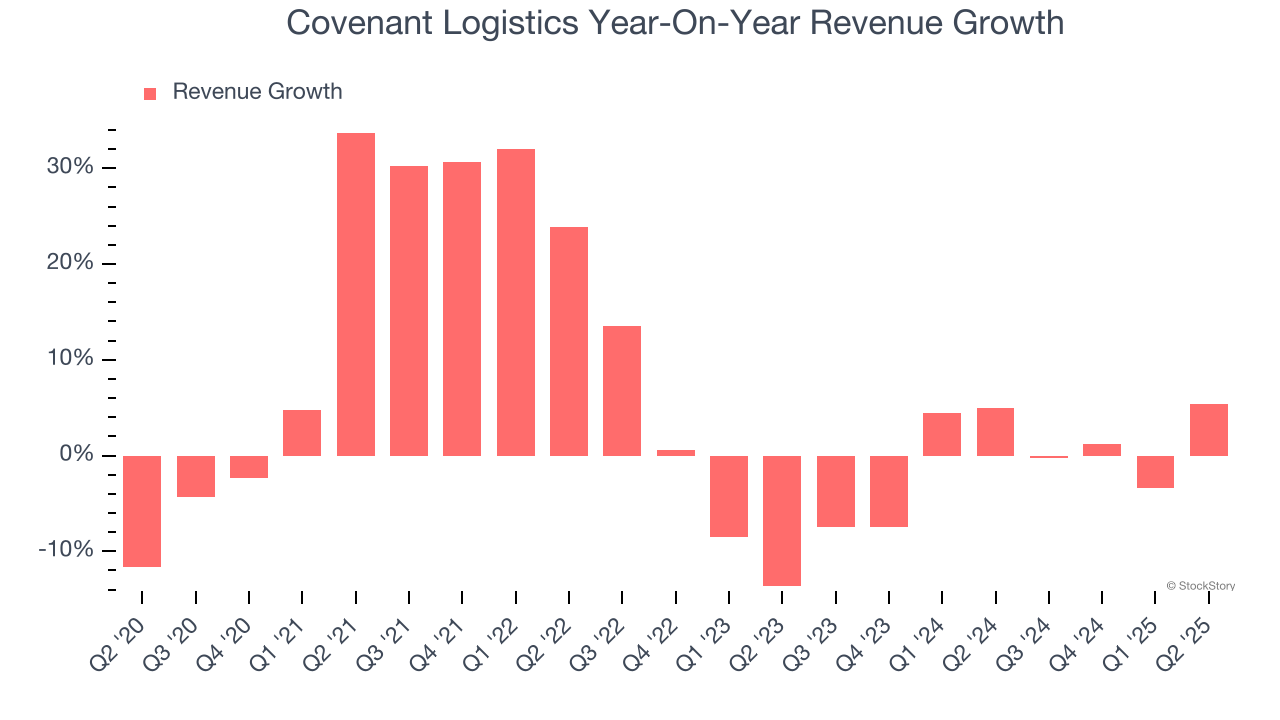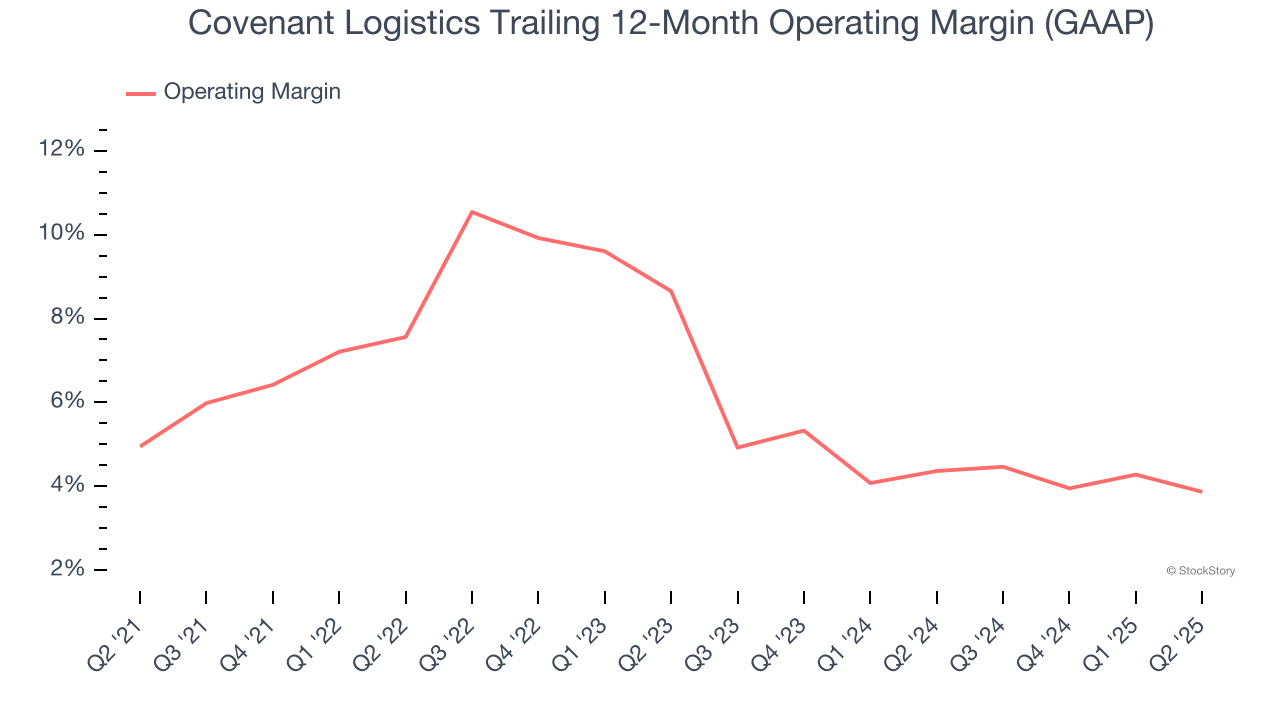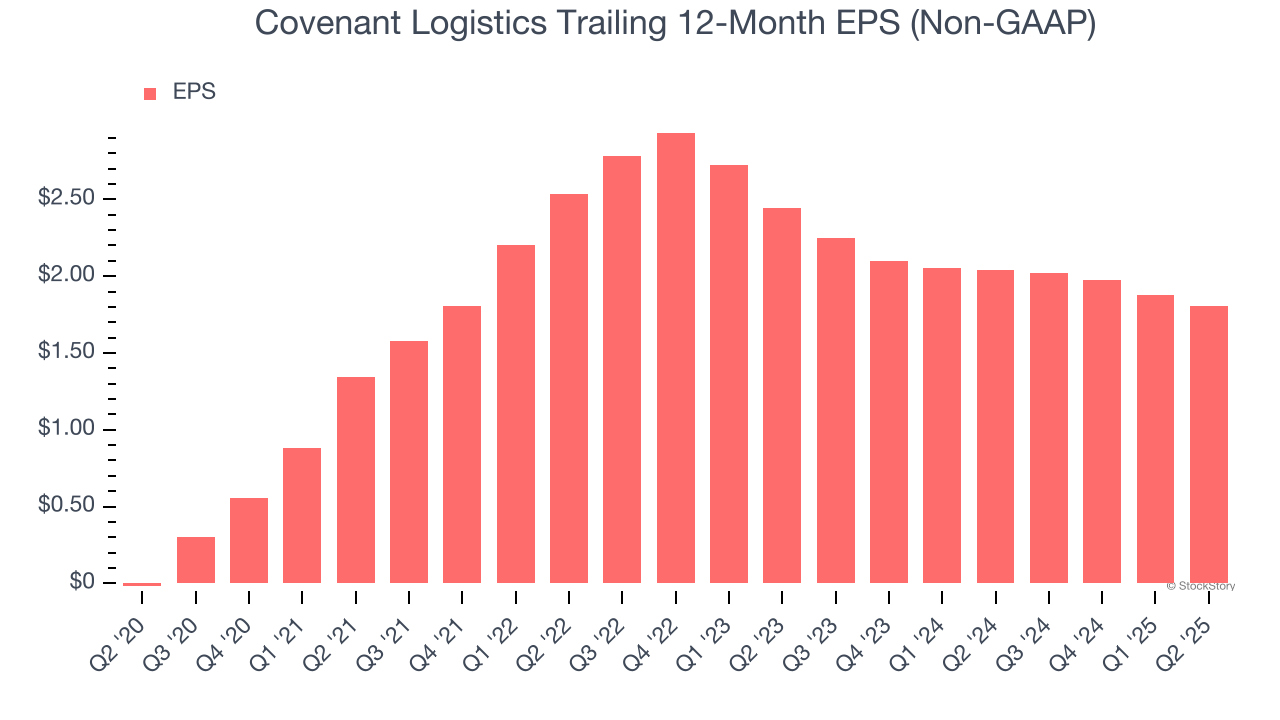
Freight and logistics provider Covenant Logistics (NASDAQ:CVLG) announced better-than-expected revenue in Q2 CY2025, with sales up 5.3% year on year to $302.9 million. Its non-GAAP profit of $0.45 per share was 8.3% above analysts’ consensus estimates.
Is now the time to buy Covenant Logistics? Find out by accessing our full research report, it’s free.
Covenant Logistics (CVLG) Q2 CY2025 Highlights:
- Revenue: $302.9 million vs analyst estimates of $292.1 million (5.3% year-on-year growth, 3.7% beat)
- Adjusted EPS: $0.45 vs analyst estimates of $0.42 (8.3% beat)
- Adjusted EBITDA: $34.68 million vs analyst estimates of $36.62 million (11.5% margin, 5.3% miss)
- Operating Margin: 3.8%, down from 5.4% in the same quarter last year
- Market Capitalization: $640.5 million
Chairman and Chief Executive Officer, David R. Parker, commented: “We are pleased to report second quarter earnings of $0.36 per diluted share or $0.45 per diluted share on a non-GAAP adjusted basis.
Company Overview
Started with 25 trucks and 50 trailers, Covenant Logistics (NASDAQ:CVLG) is a provider of expedited long haul freight services, offering a range of logistics solutions.
Revenue Growth
A company’s long-term sales performance is one signal of its overall quality. Any business can put up a good quarter or two, but many enduring ones grow for years. Regrettably, Covenant Logistics’s sales grew at a tepid 5.9% compounded annual growth rate over the last five years. This was below our standard for the industrials sector and is a rough starting point for our analysis.

Long-term growth is the most important, but within industrials, a half-decade historical view may miss new industry trends or demand cycles. Covenant Logistics’s recent performance shows its demand has slowed as its revenue was flat over the last two years. We also note many other Ground Transportation businesses have faced declining sales because of cyclical headwinds. While Covenant Logistics’s growth wasn’t the best, it did do better than its peers. 
We can better understand the company’s revenue dynamics by analyzing its most important segment, Freight. Over the last two years, Covenant Logistics’s Freight revenue (moving cargo) averaged 1.6% year-on-year growth. This segment has outperformed its total sales during the same period, lifting the company’s performance.
This quarter, Covenant Logistics reported year-on-year revenue growth of 5.3%, and its $302.9 million of revenue exceeded Wall Street’s estimates by 3.7%.
Looking ahead, sell-side analysts expect revenue to grow 4.6% over the next 12 months. While this projection implies its newer products and services will spur better top-line performance, it is still below the sector average.
Software is eating the world and there is virtually no industry left that has been untouched by it. That drives increasing demand for tools helping software developers do their jobs, whether it be monitoring critical cloud infrastructure, integrating audio and video functionality, or ensuring smooth content streaming. Click here to access a free report on our 3 favorite stocks to play this generational megatrend.
Operating Margin
Covenant Logistics was profitable over the last five years but held back by its large cost base. Its average operating margin of 5.9% was weak for an industrials business. This result isn’t too surprising given its low gross margin as a starting point.
Analyzing the trend in its profitability, Covenant Logistics’s operating margin decreased by 1.1 percentage points over the last five years. This raises questions about the company’s expense base because its revenue growth should have given it leverage on its fixed costs, resulting in better economies of scale and profitability. We’ve noticed many Ground Transportation companies also saw their margins fall (along with revenue, as mentioned above) because the cycle turned in the wrong direction, but Covenant Logistics’s performance was poor no matter how you look at it. It shows that costs were rising and it couldn’t pass them onto its customers.

In Q2, Covenant Logistics generated an operating margin profit margin of 3.8%, down 1.6 percentage points year on year. Since Covenant Logistics’s operating margin decreased more than its gross margin, we can assume it was less efficient because expenses such as marketing, R&D, and administrative overhead increased.
Earnings Per Share
We track the long-term change in earnings per share (EPS) for the same reason as long-term revenue growth. Compared to revenue, however, EPS highlights whether a company’s growth is profitable.
Covenant Logistics’s full-year EPS flipped from negative to positive over the last five years. This is encouraging and shows it’s at a critical moment in its life.

Like with revenue, we analyze EPS over a more recent period because it can provide insight into an emerging theme or development for the business.
Sadly for Covenant Logistics, its EPS declined by 14.1% annually over the last two years while its revenue was flat. This tells us the company struggled to adjust to choppy demand.
In Q2, Covenant Logistics reported EPS at $0.45, down from $0.52 in the same quarter last year. Despite falling year on year, this print beat analysts’ estimates by 8.3%. We also like to analyze expected EPS growth based on Wall Street analysts’ consensus projections, but there is insufficient data.
Key Takeaways from Covenant Logistics’s Q2 Results
We were impressed by how significantly Covenant Logistics blew past analysts’ revenue expectations this quarter. We were also glad its EPS topped Wall Street’s estimates. On the other hand, its EBITDA missed. Overall, this print had some key positives. The stock traded up 6.1% to $25.89 immediately following the results.
Is Covenant Logistics an attractive investment opportunity at the current price? We think that the latest quarter is only one piece of the longer-term business quality puzzle. Quality, when combined with valuation, can help determine if the stock is a buy. We cover that in our actionable full research report which you can read here, it’s free.
